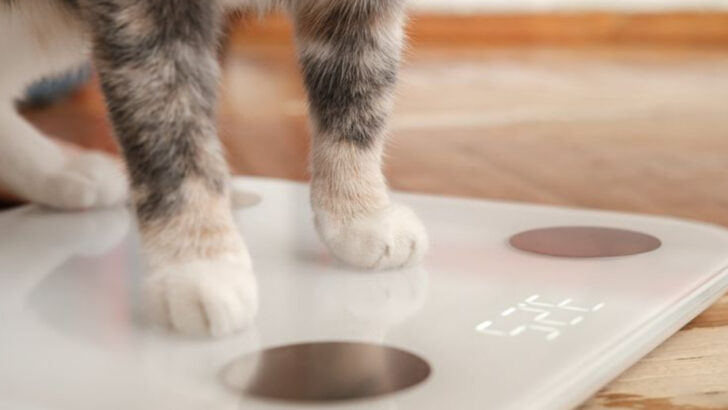Chubby cats are cute—until the health problems show up.
Extra fluff might look adorable, but those added pounds can quietly steal years from your cat’s life. We’re talking joint pain, diabetes, heart issues… all hidden under that soft belly.
The good news? You can help your cat slim down—without starving them or turning mealtime into a battle. It’s all about smart changes, a little patience, and a plan that actually works.
Ready to trade the pudge for pounces? Here are 14 vet-approved tips to help your cat lose weight and feel fantastic again.
Interactive Play Sessions
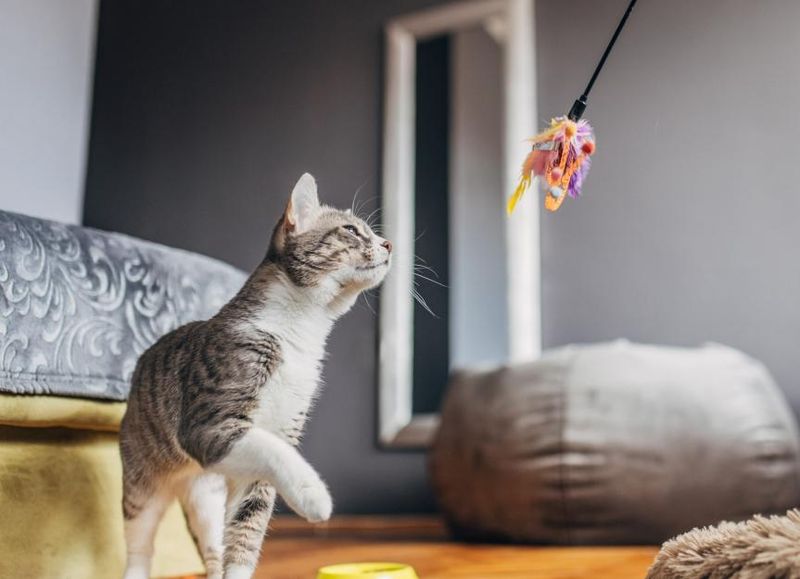
Engaging your cat in interactive play is a fun way to help them lose weight. Picture your cat’s eyes lighting up as they chase a feather toy, their body moving with agility and grace.
These sessions not only burn calories but also stimulate your cat’s mind, keeping boredom at bay. Vary the toys to maintain interest, and dedicate at least 15 minutes daily to these playful workouts.
The joy and excitement in your cat’s behavior can be contagious, turning exercise into a bonding experience. Remember, a playful cat is a happy, healthier cat.
Portion Control
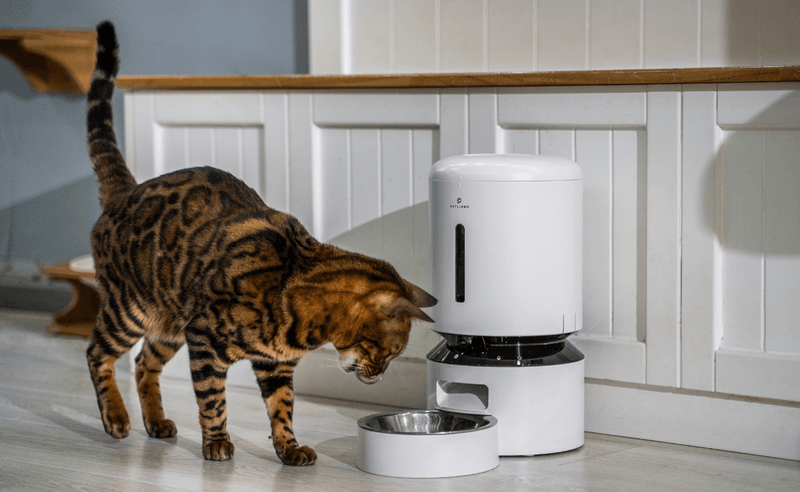
Proper portion control is pivotal in managing your cat’s weight. Imagine a veterinarian carefully measuring your cat’s meal, ensuring each portion aligns with their dietary needs.
Using a digital scale helps maintain accuracy, preventing overfeeding. Feeding guidelines on cat food labels provide a good start, but adjusting based on your cat’s activity level can make a significant difference.
Portion control can prevent weight gain and is a simple step towards a healthier lifestyle for your feline companion.
High-Protein, Low-Carb Diet
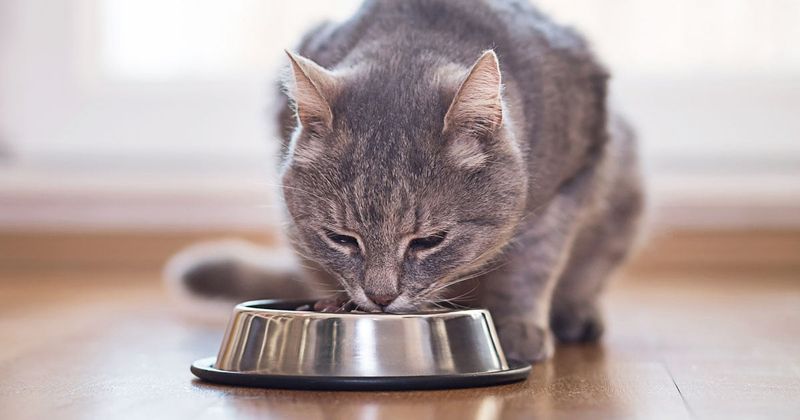
A high-protein, low-carb diet can be transformative for an overweight cat. Visualize a selection of premium cat foods, rich in proteins like chicken and fish, and low in carbohydrates like grains and corn.
This diet mimics a cat’s natural prey-based diet, keeping them fuller longer and reducing calorie intake. Consulting with a veterinarian to tailor the diet to your cat’s specific needs ensures optimal results.
This dietary change not only aids weight loss but boosts overall vitality.
Scheduled Feeding Times
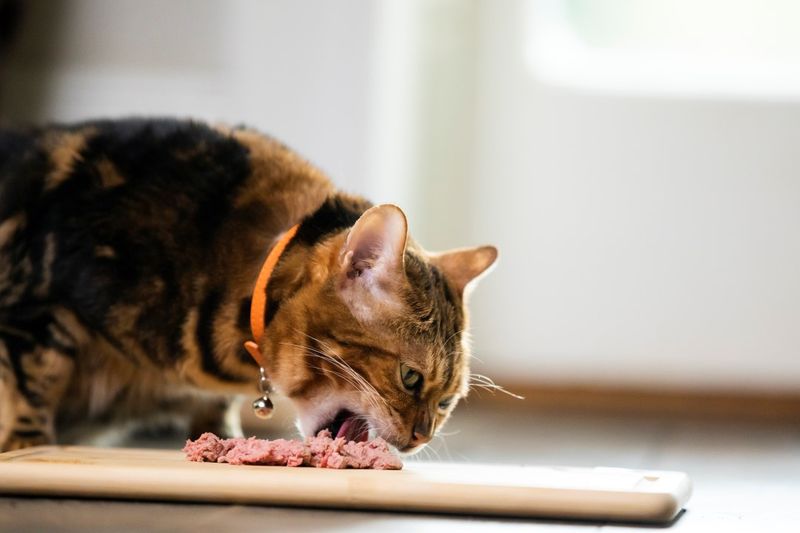
Establishing scheduled feeding times creates a routine that supports weight loss. Envision setting specific times when your cat eagerly awaits their meal, creating anticipation and structure.
This method discourages free-feeding, which often leads to overeating. By controlling when and how much your cat eats, you can effectively manage their calorie intake.
Routine feeding times can reduce food anxiety and improve digestion, contributing to a healthier diet and lifestyle for your feline friend.
Hydration Encouragement
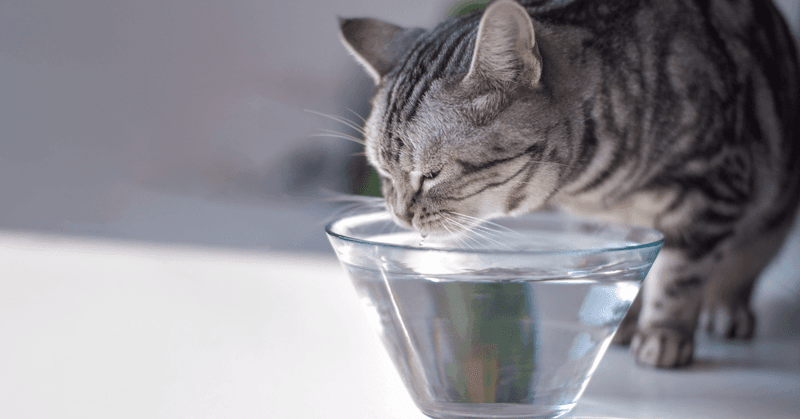
Hydration plays a critical role in weight management. Picture a sparkling water fountain that attracts your cat, encouraging them to drink frequently.
Staying hydrated supports metabolism and can make your cat feel fuller, reducing the urge to overeat. Providing fresh, clean water daily and considering different water sources can make hydration appealing.
This simple adjustment aids in maintaining a healthy weight and supports overall well-being.
Healthy Treat Alternatives
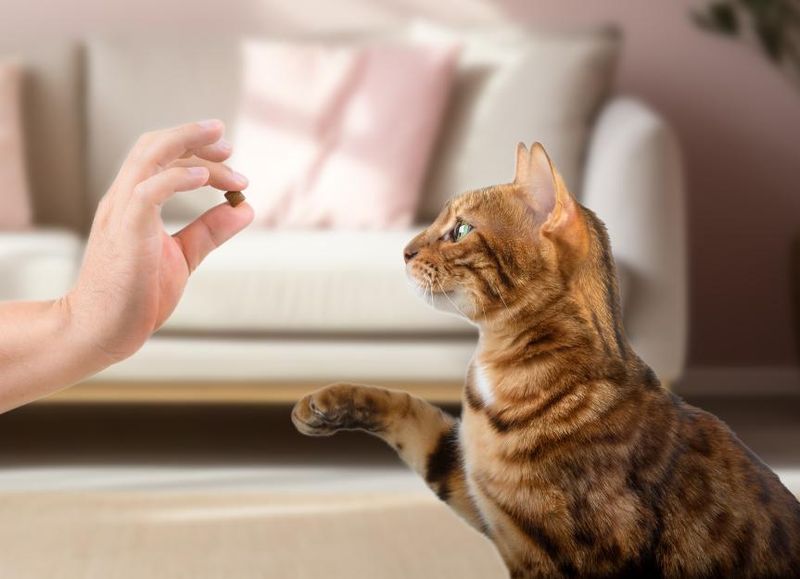
Providing healthy treat alternatives can positively impact your cat’s weight. Imagine a bowl of treats made from wholesome ingredients like freeze-dried chicken or salmon, offering nutrition without excessive calories.
These alternatives satisfy your cat’s taste buds and reward them without jeopardizing their diet. Choosing low-calorie, nutrient-rich snacks reinforces healthy eating habits and weight management.
Moderation remains key, so treats should complement a balanced diet rather than replace meals.
Environmental Enrichment
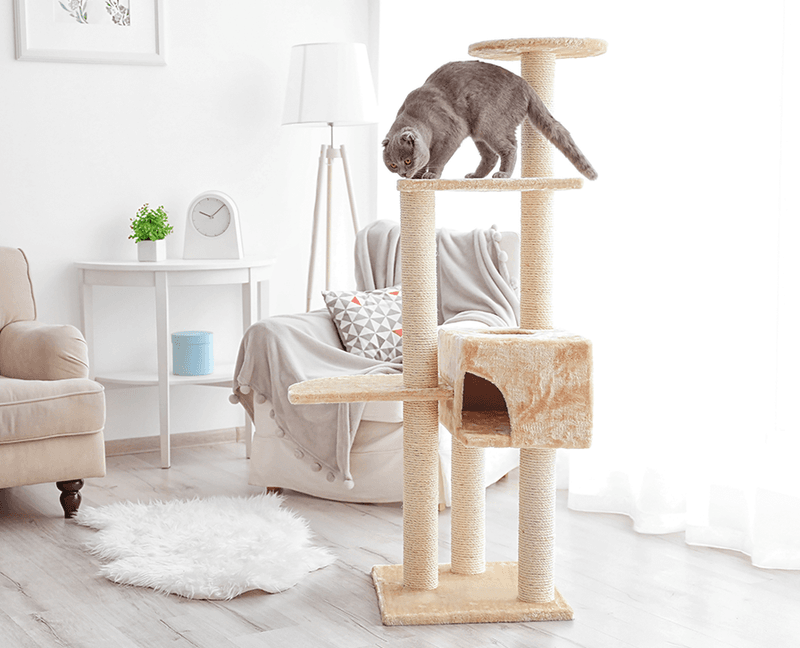
Creating an enriched environment encourages physical activity. Picture a vibrant indoor playground with climbing towers and scratching posts, inviting your cat to explore and play.
Such an environment promotes movement, aiding weight loss while enhancing mental stimulation. Rotating toys and introducing new challenges keep your cat engaged and active.
This lively setup not only combats obesity but also enriches your cat’s life with fun and excitement.
Regular Vet Check-Ups
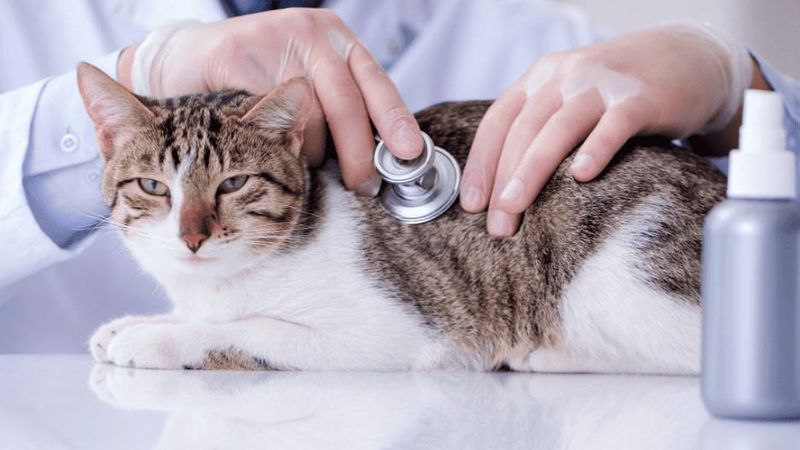
Regular vet check-ups are crucial for maintaining your cat’s healthy weight. Imagine a caring veterinarian gently examining your cat, providing insights into their weight loss progress and overall health.
These visits allow for adjustments in diet and exercise plans as needed, ensuring your cat stays on track.
Building a rapport with your vet offers peace of mind, knowing your cat’s weight is monitored and managed professionally.
Slow Feeder Bowls
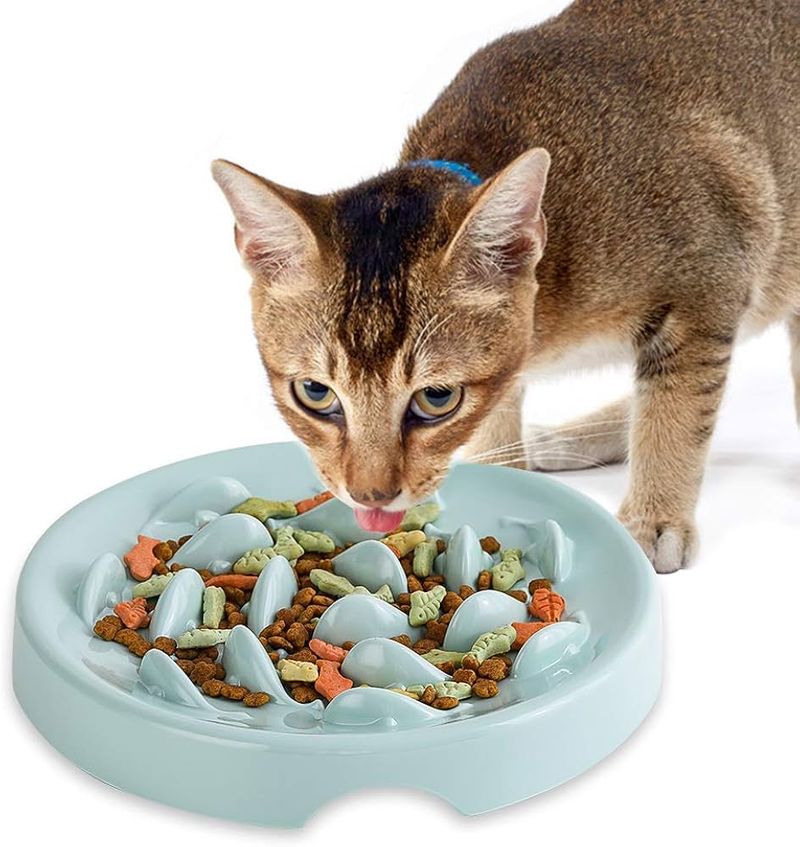
Slow feeder bowls can transform how your cat eats. Envision a bowl specially designed to slow down your cat’s eating pace, preventing overeating and aiding digestion.
These bowls turn mealtime into a mentally engaging activity, reducing the risk of obesity. Using a slow feeder can make eating more pleasurable, helping your cat savor their food and promoting a healthier weight.
Outdoor Exploration
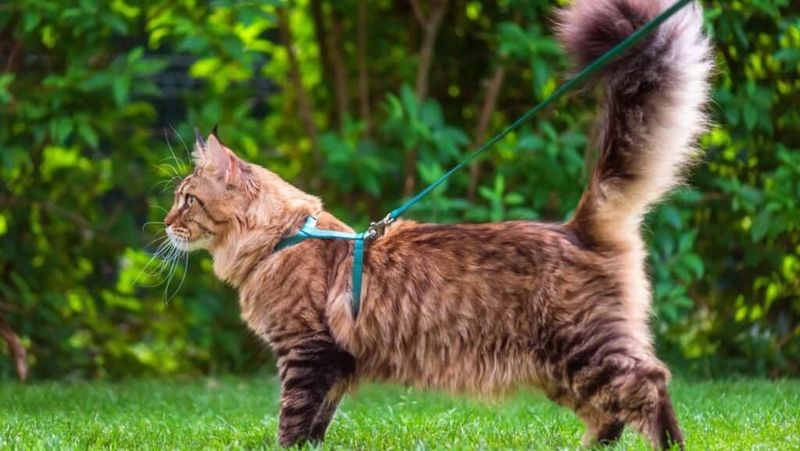
Supervised outdoor exploration provides beneficial exercise for your cat. Picture your cat, harnessed and safe, discovering a garden full of sights and scents.
This adventure stimulates their senses and promotes physical activity, contributing to weight loss. Ensure the area is secure to prevent escape, and monitor their exploration to maintain safety.
Outdoor activity enriches your cat’s life and supports a healthy weight.
Weight Loss Supplements
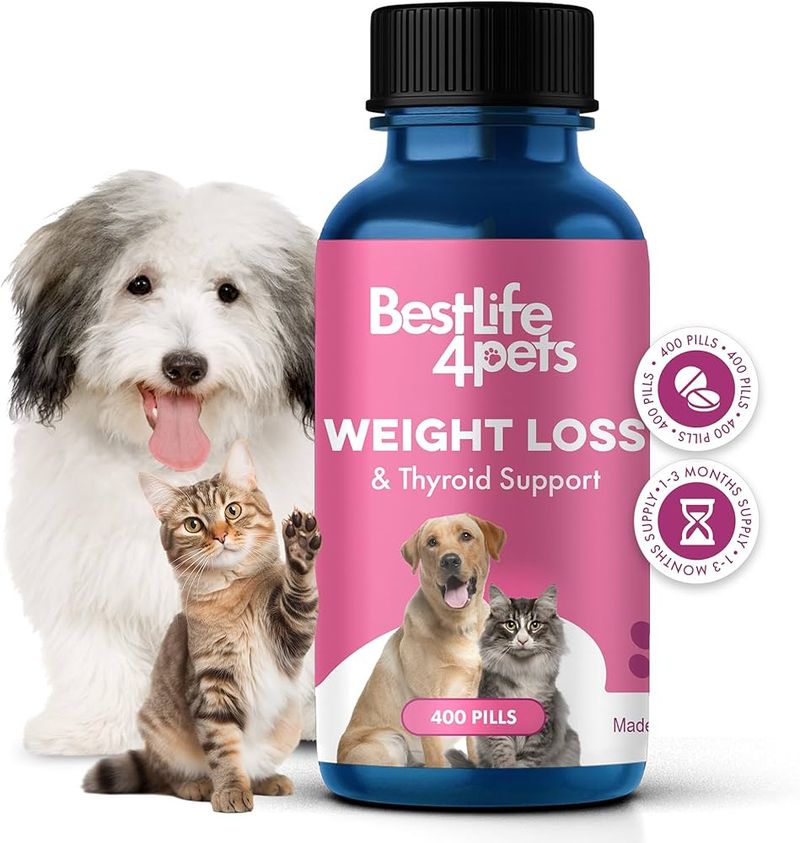
Weight loss supplements can support diet efforts. Imagine a concerned pet owner discussing options with a veterinarian, exploring safe supplements to aid their cat’s weight loss journey.
These supplements can enhance metabolism and help maintain a healthy appetite. Always consult a vet to ensure supplements suit your cat’s specific needs and conditions.
This step can complement dietary changes and exercise, promoting a balanced approach to weight management.
Monitor Progress
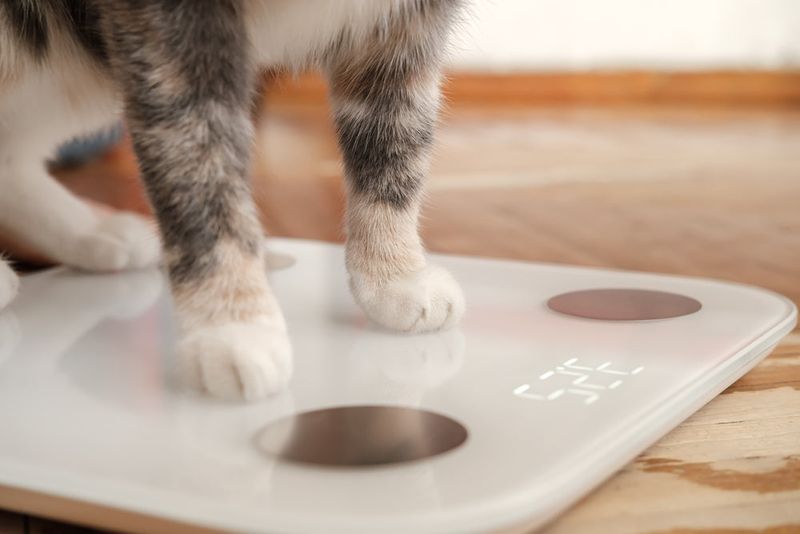
Monitoring progress is essential in a weight loss plan. Picture a dedicated pet owner diligently tracking their cat’s weight on a graph, celebrating milestones and adjusting strategies as needed.
Regular monitoring helps identify successful tactics and areas needing improvement. This proactive approach ensures weight loss goals are realistic and achievable, fostering a positive journey for both owner and feline.
Reduce Stress
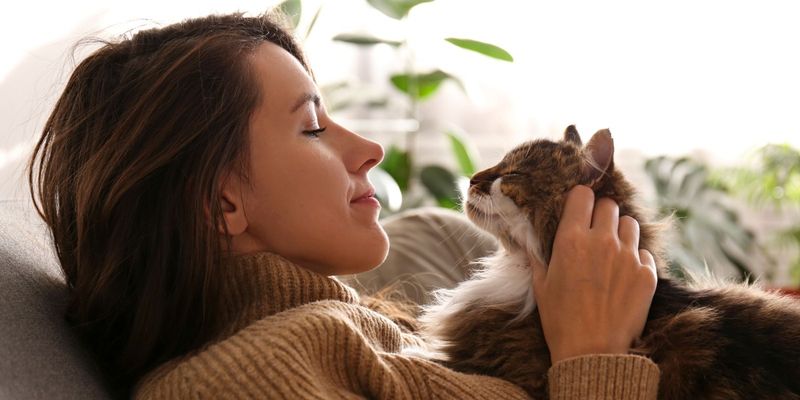
Reducing stress can significantly impact your cat’s weight loss success. Visualize a serene setting where your cat lounges peacefully, surrounded by calming elements like soft lighting and gentle music.
Stress reduction can curb emotional eating and improve overall health. Establishing a comforting environment enhances your cat’s well-being, promoting a balanced lifestyle.
Catnip Adventures
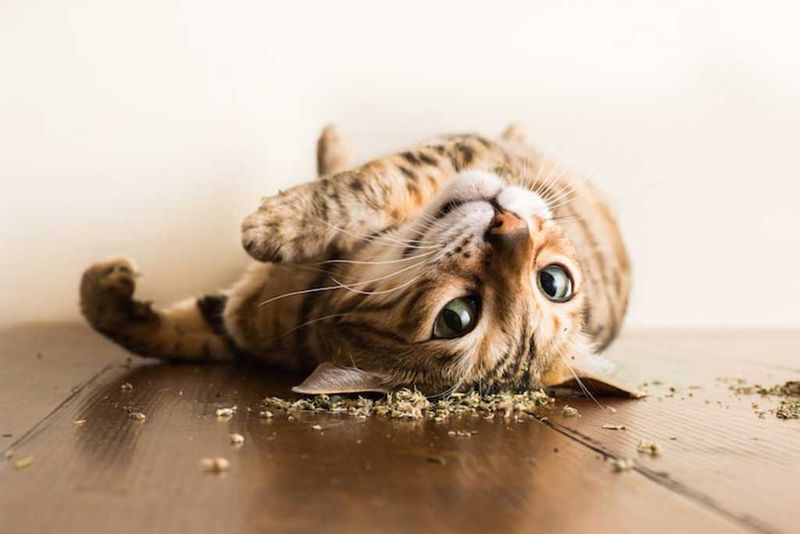
Catnip can be an exciting tool to encourage activity in your feline friend. Most cats react to catnip with bursts of energy, rolling, and playful antics that can help burn calories.
Sprinkle a little catnip in their play area or on their favorite scratching post to encourage active play. Not all cats are affected by catnip, but for those who are, it can be an exhilarating experience.
While catnip doesn’t directly cause weight loss, it encourages exercise and can make playtime more enticing. It’s a simple addition to your strategy for helping your cat stay fit.

